Matt Vensel: The good, bad and ugly of Mike Sullivan's season as Penguins coach
Published in Hockey
PITTSBURGH — The Pittsburgh Post-Gazette published my year-end Penguins report card over the weekend. It included five A grades, a few failing marks and a whole lot of meh in the middle.
When I put out my player grades after each season, one question I always get from our readers is why I don't include coach Mike Sullivan. My response is that the job the coaching staff does is typically reflected in the win-loss record for the Penguins and how far they advance in the playoffs. Obviously, their last series win was 2018.
This 2024-25 season, though, requires a more nuanced evaluation of Sullivan, who is expected to remain behind the bench next season — his 11th here in Pittsburgh.
Why? Right from the drop of the puck, this was always viewed as a transition year by Kyle Dubas and the hockey operations department. And while the Penguins still had Sidney Crosby and a handful of valuable veterans, their supporting cast was a mishmash of bottom-of-the-lineup players with a couple of salary-dump additions.
It was clear back in July that hockey ops basically viewed it as a gap year. And at a press conference before the season, Dubas attempted to temper expectations for the team. At no point in a long chat with reporters did he say "Stanley" or "Cup."
Then it took Dubas just a few weeks to start dealing away more key contributors.
By the NHL's trade deadline in early March, Marcus Pettersson, Lars Eller, Michael Bunting, Drew O'Connor and Anthony Beauvillier were all gone. Pittsburgh ended up dressing 42 different players — one of the highest totals in franchise history.
That doesn't mean that Sullivan should get a pass for his performance as coach. He bears some responsibility for the Penguins finishing with their worst record since Crosby's rookie year in 2005-06. There are also positives in there for Sullivan.
But the state of the roster, with the team trying to retool around Crosby before his contract expires, is essential context when examining the performance of Sullivan.
The good ...
The Penguins went 34-36-12 and finished seventh in the Metropolitan Division. It would have been even worse if not for major improvements in two key situations.
The most obvious one is the power play. After the Penguins finished with the worst net percentage in team history in 2023-24, they parted ways with trusted Sullivan lieutenant Todd Reirden. David Quinn replaced him, and despite not having much of a track record running NHL power plays, Quinn was tabbed with fixing that unit.
That was a curious choice, but it paid off in a big way. Quinn implemented a simple but effective system that stretched the zone vertically, and then he encouraged the stars to stop probing for that perfect pass and just attack with a "5-on-5 mentality."
Quinn and Sullivan also deserve credit for taking Evgeni Malkin and Erik Karlsson off the top power play unit — which could have created issues with egos involved. That was another catalyst for their power play, which finished sixth in the league.
The other situation where the Penguins were much better was overtime. Smarter shot selection and situational awareness helped them to earn nine victories during 3-on-3 overtime. Only three NHL teams won more games in the overtime period.
Finally, Sullivan gets positive marks for the way he handled their rising prospects.
Fair or not, Sullivan has a reputation for not trusting young players. There may be a little bit of truth to that, but I agree with Dubas on this evergreen topic. On Monday, he asked rhetorically which youngsters left the Pittsburgh organization and saw their play "skyrocket." My response to that is to say Jared McCann, then simply shrug.
Anyway, Sullivan played Owen Pickering, Rutger McGroarty and Ville Koivunen in prominent roles this season in Pittsburgh, and they all had some encouraging efforts. He gave opportunity to goalie Joel Blomqvist, with a mixed bag of results. And Philip Tomasino isn't a prospect, but Sullivan largely let him play through mistakes.
For Sullivan, that young player piece is incredibly important if he indeed continues on as head coach. Dubas and Sullivan are meeting this week to make sure they are in alignment, with Dubas not looking to hit the gas on Cup contention this summer.
The bad ...
A few big failures will fall into the "ugly" bucket, so we'll keep it brief with the bad.
At least in theory, the Penguins had a chance in the fall to make noise in the Metro standings and try to convince Dubas to hold off on dismantling the roster. Instead, they got off to another poor start and endured a few blowout losses in front of the boo birds at PPG Paints Arena, leading to questions about Sullivan's job security.
Simply put, it took Sullivan and his veteran club far too long to stop the bleeding.
The Penguins regrouped between the holidays and briefly got back into the race. But they petered out in January, then Dubas basically pulled the plug when he sent Pettersson and O'Connor to Vancouver. Admirably, they went 13-12-4 after that.
Another mild critique of Sullivan is the reliance on Crosby, Bryan Rust and Rickard Rakell to carry most of the load offensively. As noted at the top, he didn't have a whole lot of firepower at his disposal. But it is fair to question why Sullivan opted to load up his top line instead of making more of an effort to balance out his lineup.
Just a guess here, but keeping Crosby happy probably factored into his thinking.
The ugly...
Under Sullivan, the Penguins were one of the league's worst defensive teams, bleeding odd-man rushes and allowing opponents to fire away from inside the slot.
Only two teams gave up more goals than them. And they ranked inside the bottom six in a bunch of key markers, including shots from the inner slot, scoring chances off of turnovers, rush chances allowed and expected goals against, per Sportlogiq.
As Dubas noted Monday, the Penguins' goaltending was subpar, too, which made for a dangerous combination. At season's end, the team was 29th in save percentage.
More tangibly, their atrocious team defense led to the Penguins giving up 15 goals on the first shot of a game and also to them blowing several two-goal leads. Their playoff hopes were killed when they did the latter March 18 against the Islanders.
Their personnel was a problem, no doubt. Ryan Graves and Karlsson were again liabilities on the back end, Kris Letang took a troubling downturn in the season's second half, and Sullivan had no choice but to lean on some fringe NHL defenders.
But Sullivan's tactics were a problem. They worked a few years back when we last saw Pittsburgh in the playoffs. But does his puck-chasing style still fit this team?
Another big issue was the lack of consistent buy-in from his players — something that Sullivan acknowledged when speaking with reporters after the season ended. If his players really did tune him out, that doesn't seem to bode well going forward.
There is no doubt that Sullivan is still a good NHL coach. His work with Team USA in a short tournament at the 4 Nations Face-Off provided a reminder of that. But is he still the right coach for the Penguins? That seems to very much be up for debate.
It is likely moot, though, given that Dubas strongly suggested Monday that Sullivan would be back with the Penguins next season. He has two years left on his contract.
Grade for Sullivan: C-
____
© 2025 the Pittsburgh Post-Gazette. Visit www.post-gazette.com. Distributed by Tribune Content Agency, LLC.
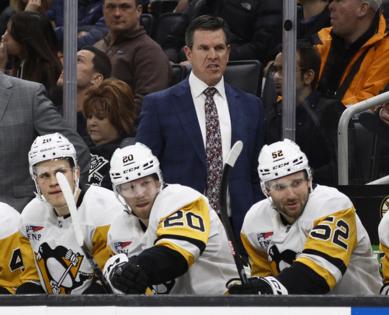
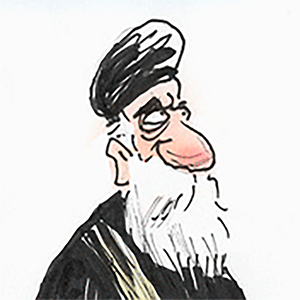
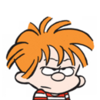

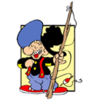

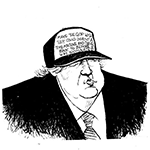
Comments